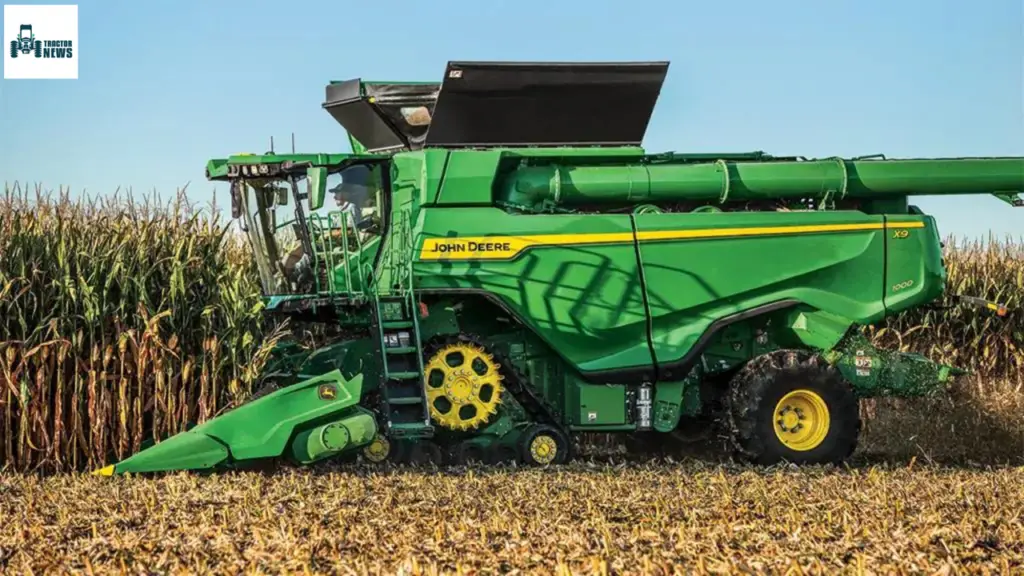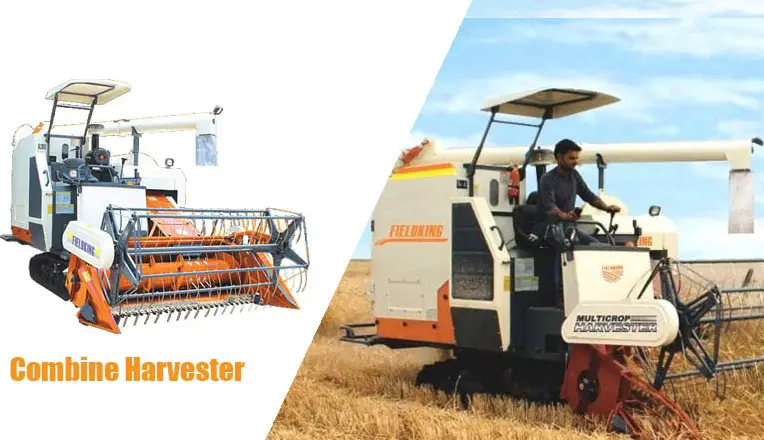This post may contain affiliate links which means I may receive a commission for purchases made through links. Learn more on my Private Policy page.
Are you a farmer looking to maximize your yield during harvest season? If so, then knowing the best practices for using a combine harvester is essential. Whether you’re a seasoned farmer or just starting out, these tips will help you optimize your harvesting process and ensure a successful crop. From proper maintenance to efficient operation techniques, this article will guide you through the best practices for getting the most out of your combine harvester.
Preparation Before Harvesting
Before beginning the harvesting process, it is crucial to ensure that your combine harvester is in optimal condition. This begins with a thorough inspection of the machine to identify any potential issues or areas that may require repair. Inspect the combine harvester carefully, paying close attention to the cutting system, reel, sieves, and threshing components. Look for any signs of wear and tear or damage that could affect the machine’s performance. By addressing these issues beforehand, you can prevent any complications during the harvesting process.
In addition to inspecting the combine harvester, it is essential to check the fuel and oil levels. Operating with inadequate levels of fuel or oil can lead to a sudden breakdown, significantly impacting your efficiency and productivity. Make it a habit to regularly check the levels before each use and top up if necessary. By maintaining the correct levels, you can ensure smooth operation and minimize the risk of unexpected disruptions.
Calibrating and adjusting the settings of your combine harvester is an essential step in optimizing its performance. Take the time to familiarize yourself with the various settings and functions of the machine. Adjustments such as rotor speed, concave clearance, and threshing configurations play a vital role in the harvesting process, as they determine the machine’s efficiency and grain quality. It is advisable to consult the manufacturer’s manual or seek guidance from experienced operators to ensure precise calibration.
Safety should always be a top priority when operating any agricultural machinery, including combine harvesters. Before starting the harvesting process, ensure that all safety measures are in place. This includes checking that all shields and guards are correctly fitted and functioning correctly. Be aware of any potential hazards in the field, such as uneven terrain or nearby power lines, and take the necessary precautions to avoid accidents. Additionally, make sure to wear appropriate personal protective equipment, including safety glasses, ear protection, and sturdy footwear.
Cleaning your combine harvester at the end of each day’s work is essential for maintaining its performance and longevity. Removing dirt, debris, and residue from the machine prevents buildup and potential damage to the components. Pay attention to crucial areas such as the feeder house, cleaning system, and grain tank. By keeping your equipment clean, you can prevent blockages and ensure optimal performance during the harvesting season.

This image is property of www.equipmenttrader.com.
Field Preparations
Scouting the crop before harvesting is a crucial step in maximizing yield and efficiency. Take the time to assess the crop’s condition, including its maturity and overall health. Identify any areas of the field that may require special attention, such as weed infestations or disease presence. This information will help you determine the best harvesting practices and optimize the combine harvester’s settings accordingly.
Determine the correct time for harvesting by monitoring the crop’s moisture content. Harvesting too early can result in lower grain quality and reduced yields, while harvesting too late can lead to shattering and yield losses. The moisture content of the crop plays a significant role in determining the appropriate time for harvesting, as it affects the quality of the grain and the efficiency of the machine. Use reliable moisture testing methods to ensure you are harvesting at the optimal moisture level.
Checking the soil and weather conditions is essential before beginning the harvesting process. Ensure that the soil is adequately dry to prevent compaction and minimize the risk of getting stuck in the field. Wet soil can lead to inefficient operation and potential damage to the machine. Additionally, be aware of the weather forecast, especially if adverse conditions such as rain, high winds, or storms are expected. Harvesting in unfavorable weather conditions can compromise both the crop quality and the operator’s safety.

This image is property of t-news.b-cdn.net.
Operating the Combine Harvester
Starting the engine of your combine harvester is typically a straightforward process, but it is essential to follow the manufacturer’s recommended procedure. Always perform the necessary safety checks before starting the engine, such as ensuring that the parking brake is engaged and that the machine is in neutral gear. Refer to the operator’s manual to understand the specific steps for starting the engine of your particular combine harvester model.
Setting the cutting height correctly is crucial to ensure optimal harvesting performance. Adjust the cutting height to match the crop’s maturity and field conditions. Harvesting too close to the ground can result in gathering excessive debris and soil, while harvesting too high can lead to unnecessary crop losses. Strike the right balance by keeping a close eye on the crop and making the necessary adjustments as needed.
Adjusting the reel speed is another essential step in optimizing the combine harvester’s performance. The reel helps to efficiently feed the crop into the machine’s cutting system. Adjust the reel speed according to the crop’s density and height, ensuring a smooth and consistent flow into the harvester. As with other settings, it may take some trial and error to find the optimal reel speed for different crops and field conditions.
Monitoring the grain tank capacity is crucial during the harvesting process. A full grain tank can result in the loss of freshly harvested grain and increase the risk of machine overload. Keep a close eye on the tank’s capacity and unload as needed to maintain efficient operation. Remember to follow proper grain handling and storage practices to ensure the quality and marketability of the harvested grain.
Maintaining a consistent ground speed is key to achieving uniform harvesting and preventing crop losses. Pay attention to the machine’s ground speed, ensuring that it matches the harvesting conditions and the crop’s maturity. Avoid sudden changes in speed, as this can result in uneven feeding and potential losses. By maintaining a steady ground speed, you can optimize the combine harvester’s efficiency and preserve grain quality.
Moving in straight lines while harvesting is a simple yet effective technique to maximize efficiency. Aim to maintain a straight and parallel course throughout the field, ensuring that the harvested rows align with the machine’s header. This minimizes the risk of overlap or missed sections, reducing fuel consumption and saving time. Utilize any available guidance systems or field markers to assist in maintaining straight lines.
Clearing any blockages or jams promptly is crucial to avoid damage to the combine harvester and ensure continuous operation. Regularly inspect the machine for potential blockages or obstructions, paying close attention to areas such as the feeder house, threshing system, and cleaning system. If a blockage occurs, stop the machine, turn off the engine, and safely remove the obstruction before resuming operation. Regular maintenance and cleaning can help prevent blockages, but it is essential to remain vigilant during the harvesting process.
When operating a combine harvester, it is vital to be cautious of power lines and other obstacles in the field. Always be aware of your surroundings, especially when working in areas with overhead power lines. Maintain a safe distance to avoid accidents and potential damage to both the machine and the power lines. Familiarize yourself with the route you will be taking in the field beforehand and identify any potential obstacles that may hinder your progress.
Another factor to consider when operating a combine harvester is the weight on the header. Excessive weight can cause unnecessary strain on the machine, potentially leading to performance issues and structural damage. Avoid overloading the header by adjusting settings and optimizing the combine harvester’s performance to match the specific field conditions and crop density. By maintaining an appropriate weight on the header, you can ensure smooth operation and minimize the risk of damage.

This image is property of www.fieldking.com.
This post may contain affiliate links which means I may receive a commission for purchases made through links. Learn more on my Private Policy page.

